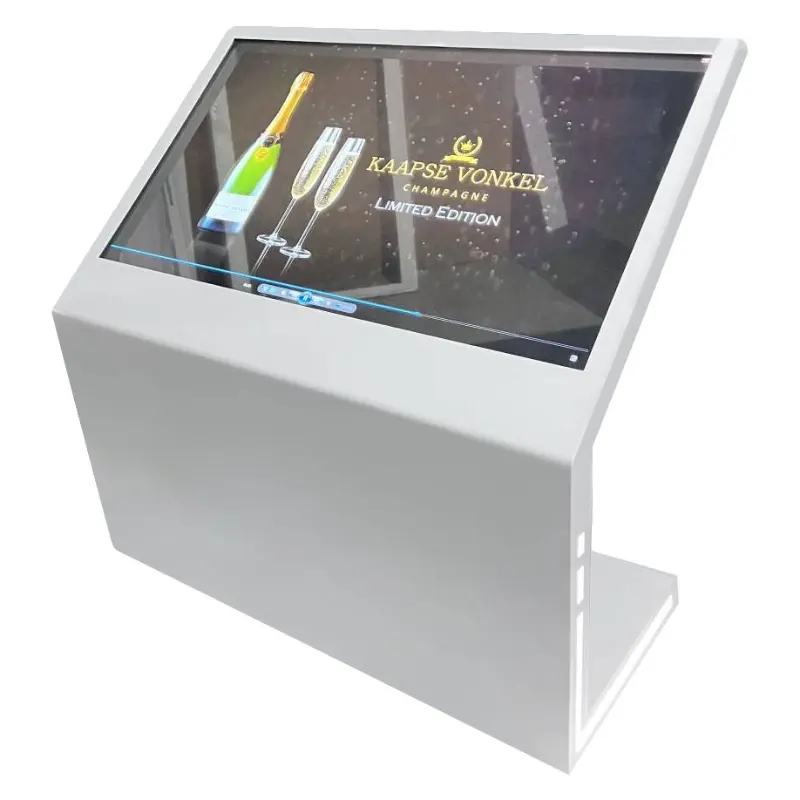With the continuous advancement of display technology, transparent OLED display has gradually become a product that has attracted much attention in the market with its unique visual effects and application scenarios. Transparent OLED technology enables the display to present clear images without affecting transparency, and is widely used in advertising, retail, smart home and other fields. However, the price of transparent OLED display is relatively high, and many buyers tend to pay attention to its cost structure when choosing. So, what factors determine the price of transparent OLED display? The following are the ten key factors affecting the cost of transparent OLED display.
1.Complexity of production technology
The production process of transparent OLED display is much more complicated than that of traditional OLED display. It requires extremely high manufacturing precision and technical requirements, including the selection of transparent materials, the process of transparent electrodes, etc. Therefore, the technical difficulty in the production process directly affects the cost, especially the investment in advanced production equipment and technology, which will increase the production cost.
2.Material cost
The material cost required for transparent OLED display is also an important factor affecting the price. The core materials of transparent OLED include OLED light-emitting layer, transparent substrate (usually glass or plastic substrate) and transparent electrode. The selection of different materials will affect the brightness, transparency and display effect of the screen, and also determine the price of the materials.
For example, glass substrates are usually more expensive than plastic substrates, so transparent OLED displays using glass substrates will cost more.
3.Size and resolution
The size and resolution of transparent OLED displays are also key factors in determining the price. Generally speaking, the larger the size, the more materials, equipment and technical input required in the production process, which will increase the cost. Common sizes include 30-inch and 55-inch transparent OLED displays. In addition, high-resolution screens require more sophisticated production processes to ensure the clarity of the display effect, which will also increase production costs.
4.Display effect and brightness requirements
The brightness and display effect of transparent OLED displays have a direct impact on the price. In order to maintain a clear display effect in a well-lit environment, transparent OLED displays need to have higher brightness and contrast. Higher brightness requires higher quality OLED luminescent materials and more complex processes, which will undoubtedly increase costs.
5.Production volume and batch procurement
The production batch of transparent OLED displays also has a significant impact on the price. Batch production can reduce unit costs, so the price is relatively low when purchasing on a large scale. Small batch production cannot dilute the cost, which usually leads to higher prices.
6.R&D investment
The development of transparent OLED technology requires continuous R&D investment. In order to improve display effects, enhance transparency, reduce energy consumption, etc., manufacturers need to continuously invest in R&D. These R&D costs will eventually be passed on to product prices, so the size of R&D investment is also an important factor affecting prices.
7.Production equipment and automation level
The production process of transparent OLED displays requires high-precision equipment, and the higher the automation level of the equipment, the higher the production efficiency and the lower the cost. On the contrary, low-automation and manual production methods will lead to an increase in production costs. The procurement and maintenance costs of high-end equipment are also an important factor affecting prices.
8.Market demand and supply chain factors
The market demand and supply chain conditions of transparent OLED displays have a direct impact on price fluctuations. If demand grows sharply or the supply chain is subject to certain restrictions (such as raw material shortages, insufficient production capacity, etc.), it may lead to price increases. In addition, as the technology gradually becomes popular, the production cost of transparent OLED displays is expected to gradually decrease, and the price may also decrease accordingly.
9.After-sales service and quality assurance
Finally, after-sales service and quality assurance are also important factors affecting the price of transparent OLED displays. High-quality transparent OLED displays usually provide longer warranties, more complete after-sales services, and higher standards of quality control. The cost of these services and guarantees will be reflected in the final price of the product.
Conclusion
Transparent OLED displays have attracted more and more attention from the industry with their unique visual effects and diverse application prospects. However, their higher prices are also an important consideration for many buyers when choosing. Understanding the various factors that affect prices can help buyers make more informed decisions.
If you are looking for high-quality transparent OLED displays, please contact ankeshi for more details and the latest quotes.







